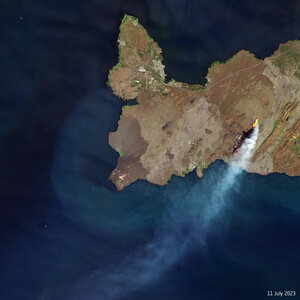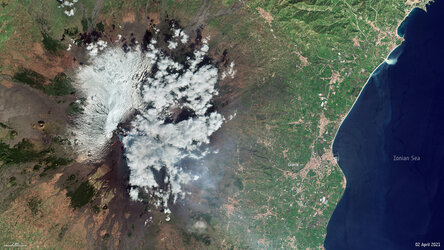
Applications
Smoke plume from Popocatépetl volcano
Captured on 17 November 2023, this Copernicus Sentinel-2 image shows a plume of smoke spewing from the Popocatépetl volcano, located some 70 km southeast of Mexico City.
Zoom in to explore this image at its full 10 m resolution.
Standing at 5,425 m high, the Popocatépetl volcano, also known as El Popo, has been active for centuries and has been continuously erupting for decades.
Satellites in orbit carry different instruments that provide a wealth of complementary information to better understand volcanic eruptions. Optical satellites, such as the Copernicus Sentinel-2 mission, can image smoke plumes, lava flows, mudslides and ground fissures.
See also: Sulphur dioxide concentrations from Mexico's Popocatepetl volcano





